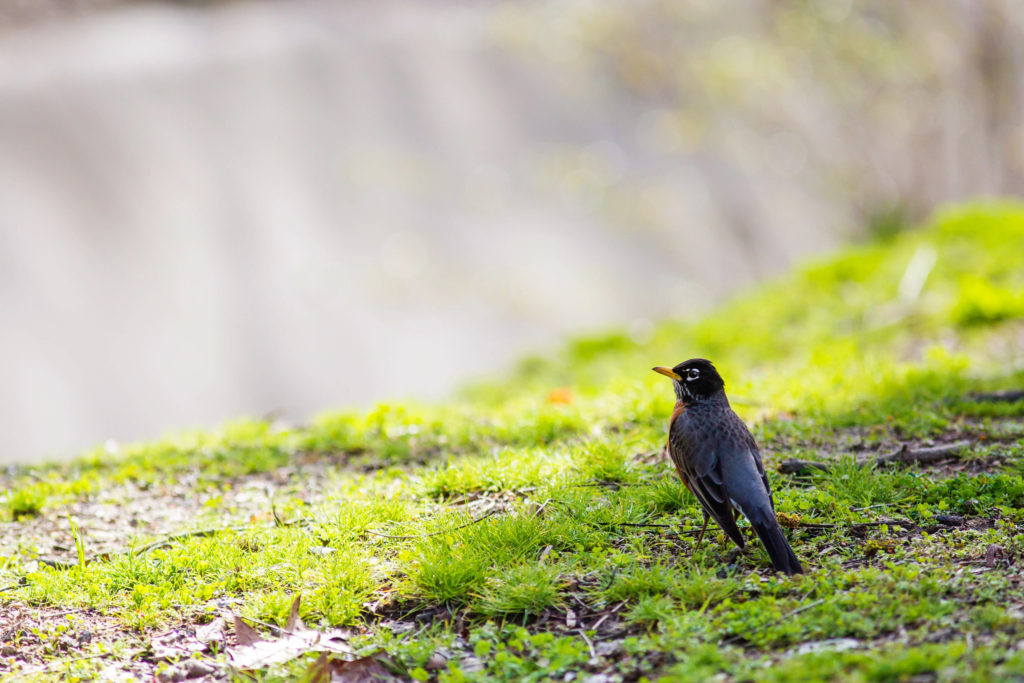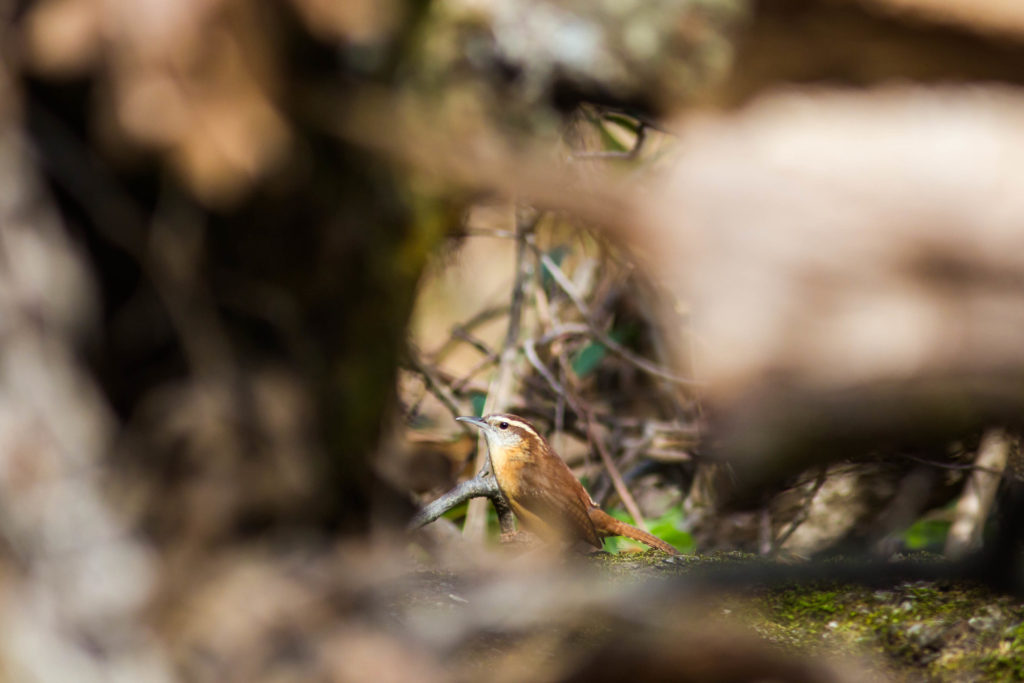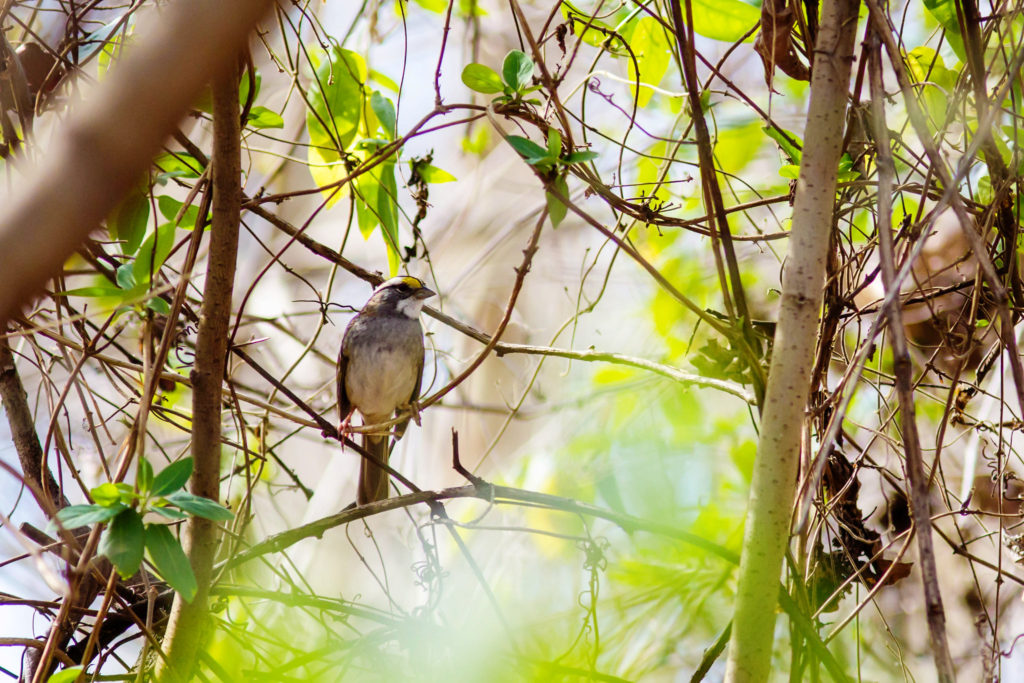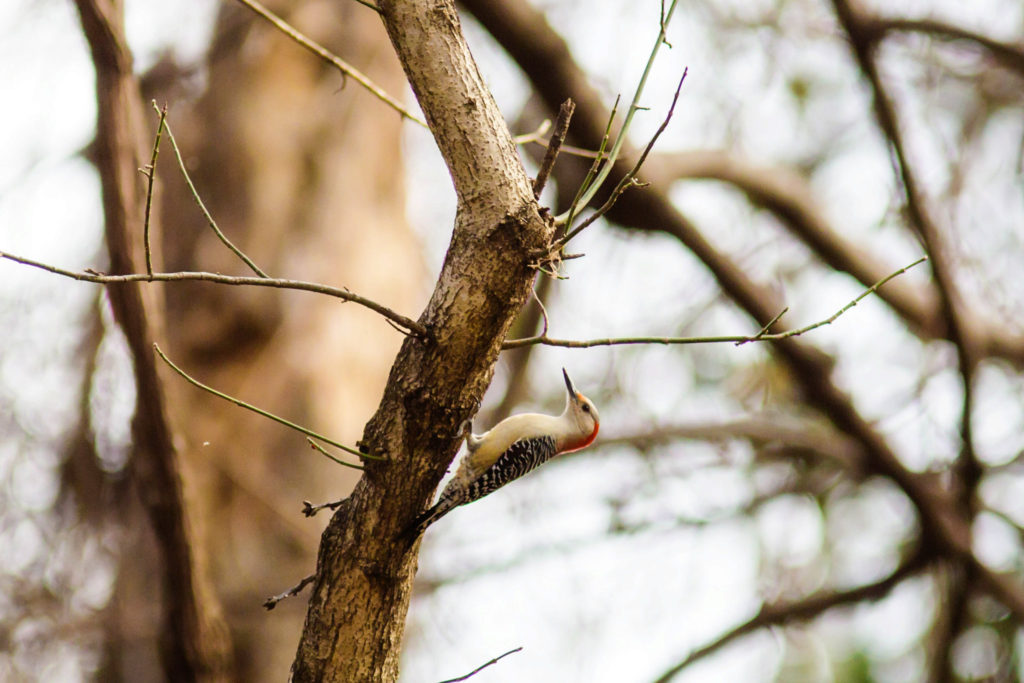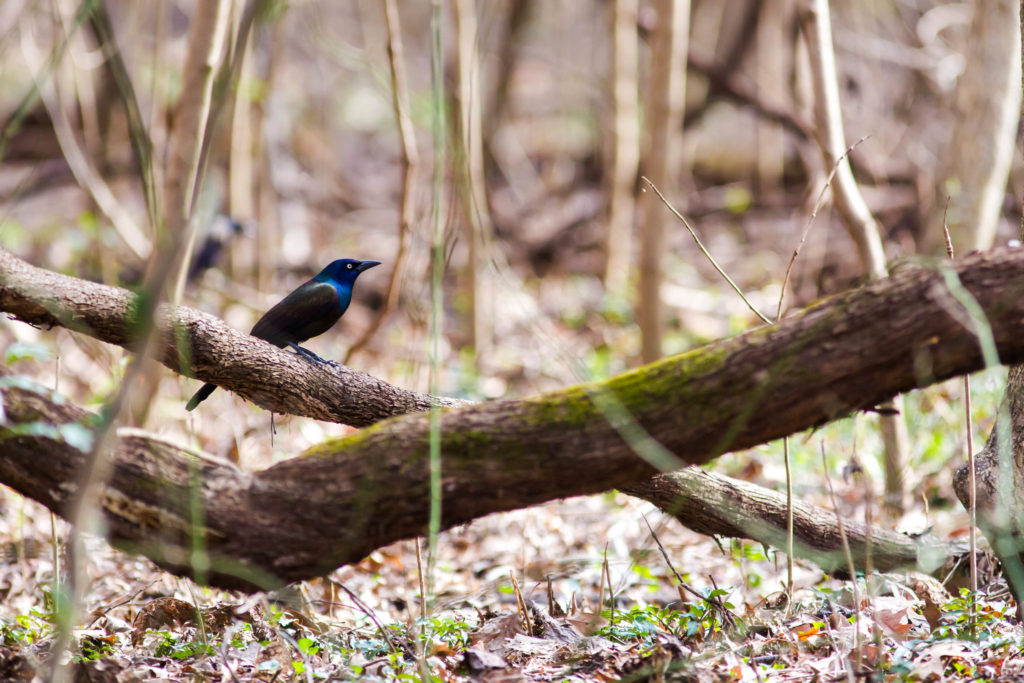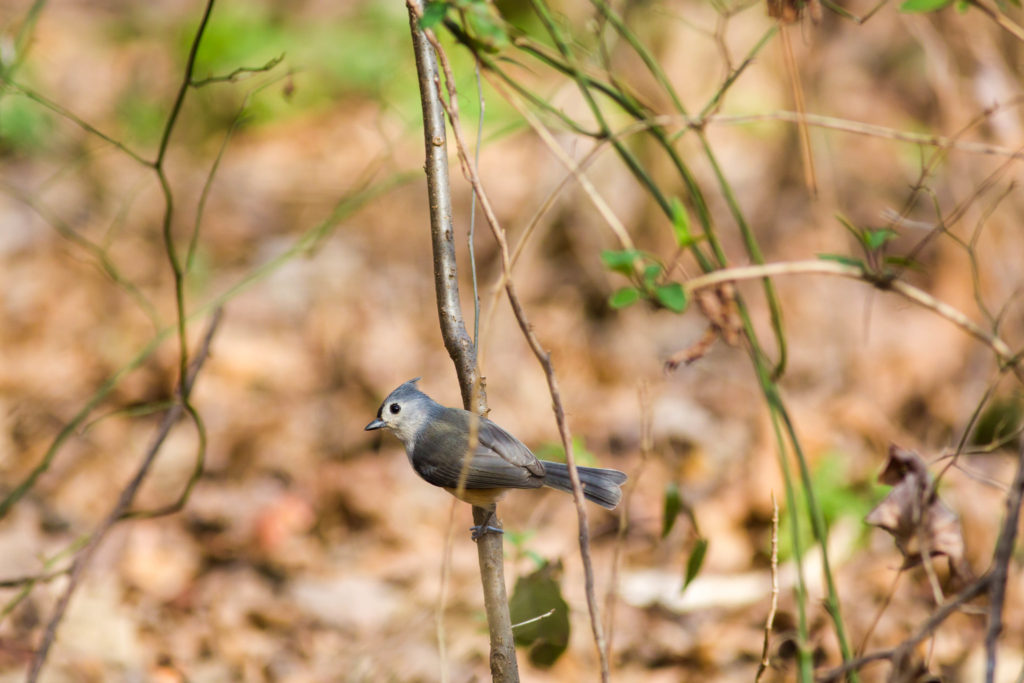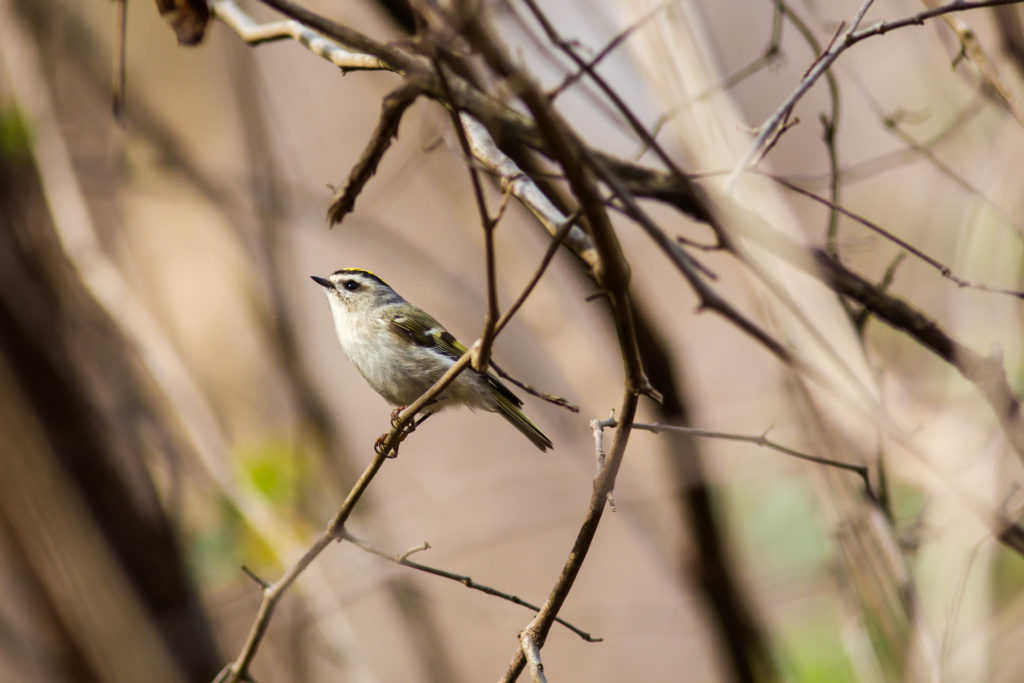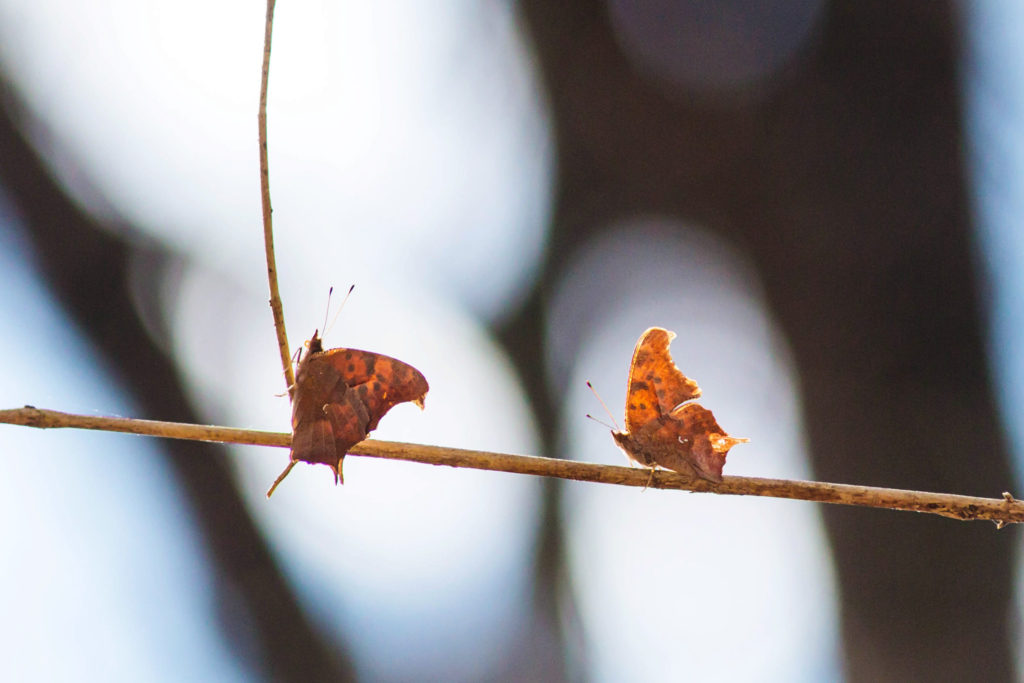Birds and question marks
Today was the final day of the 2017 Great Backyard Bird Count, an annual citizen-science effort presented by the National Audubon Society and the Cornell Lab of Ornithology. So far during this four-day event, more than 100,000 checklists have been submitted from all over the world by people who spend as little as 15 minutes simply logging the species of birds they see in their area.
 The purpose of the count is to provide scientists with data about which birds are in which locations, in what kind of numbers. Because so many factors influence bird populations–weather events, changes in habitat, diseases, etc.–having this level of data becomes more valuable with each passing year. One of the questions scientists are trying to answer using data from events like the GBBC is why winter finches can be so abundant in certain years and barely visible in others. (I’ve noticed this in the five years I’ve been working at Overton Park: the Old Forest is lousy with purple finches this year, and in previous years I’ve considered them a white whale of sorts. I never could get a decent photo of the one or two I’d see each winter! Now they’re out in the forest by the dozens, and I have eight at a time on my backyard feeder.)
The purpose of the count is to provide scientists with data about which birds are in which locations, in what kind of numbers. Because so many factors influence bird populations–weather events, changes in habitat, diseases, etc.–having this level of data becomes more valuable with each passing year. One of the questions scientists are trying to answer using data from events like the GBBC is why winter finches can be so abundant in certain years and barely visible in others. (I’ve noticed this in the five years I’ve been working at Overton Park: the Old Forest is lousy with purple finches this year, and in previous years I’ve considered them a white whale of sorts. I never could get a decent photo of the one or two I’d see each winter! Now they’re out in the forest by the dozens, and I have eight at a time on my backyard feeder.)
Every checklist tells a story, which is why I like to add at least one from Overton Park each year. Here’s a sampling of what I saw today.
No good Southern bird count starts with anything other than an American robin, which is probably the most abundant species in our area right now.
I saw a Carolina wren hopping through some brush. I had to stand on tiptoe to see it through the small opening between tree limbs.
This yellow-rumped warbler is already starting to molt into its spring plumage. In the winter, these birds are quite plain, but in the spring their color palette is much bolder: more blacks than grays, and a dark mask around the eyes.
White-throated sparrows are another common winter resident in the Old Forest.
If you’re lucky, you’ll find yourself walking the trails when a group of Northern flickers is feeding on the ground. One by one they fly up into the trees, showing off the bright yellow on the underside of their tails. Our eastern subspecies of this bird is called “yellow-shafted flicker” for that reason.
The second woodpecker I saw was the red-bellied woodpecker. There were a few others today that were heard but not seen.
Common grackles are the blackbirds we’re used to seeing in large flocks, hanging out at the tops of trees, screeching their rusty-door-hinge calls. From that distance it’s hard to appreciate the beautiful iridescence of their blue heads.
This tufted titmouse was also screeching, but its call is much more insistent. The best description I’ve seen is in Julie Zickefoose’s wonderful book The Bluebird Effect, which has a chapter titled “Nobody Can Cuss Like a Titmouse.”
The golden-crowned kinglet is the smallest bird you’ll see in the forest until the ruby-throated hummingbirds return in the spring. This is a winter-only bird for our area, and it hops around incessantly foraging for food. As a photography subject, it gives with one wing and takes away with the other: it’s not particularly shy, so I can get very close to it, but it almost never stops moving, so most photos are just a blur. Today’s kinglet was very cooperative, probably because I promised it a spot on the blog.
That’s all I got in terms of bird photos, but my favorite find of the day was actually from the insect world. Since we’ve been having such an early spring (20 whole days early, according to the USA National Phenology Network), butterflies are starting to emerge. A few species overwinter in things like hollow logs, and one of them is the question mark. Today I saw three: while I was observing these two, a third landed on my head. I didn’t notice this until I turned to walk away, but to be fair, butterflies don’t really land with a thud. Check out the white markings on the wings to see why they’re called question marks. (You can enlarge all these photos by clicking on them.)

